Museums, Theaters, Architecture, Brazil
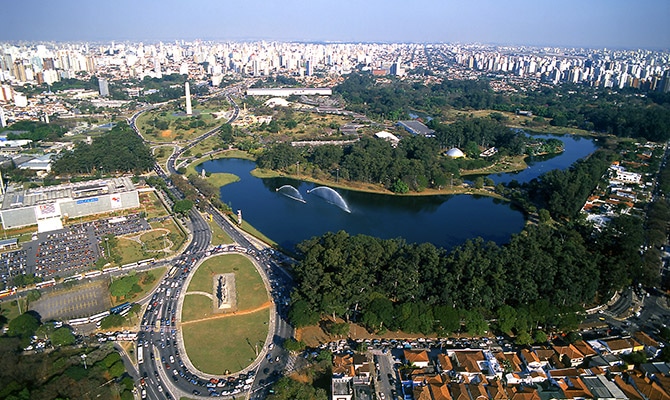
Removed from Unnamed collection
Ibirapuera Park 
Opened in 1954, during Sao Paulo's 400th anniversary, the Ibirapuera Park has a 1.6 million m² area and sports courts, bicycle racks and restaurants.
The project was led by Oscar Niemeyer, the architect who created most of the buildings in Brasilia. It also involved several professionals, such as architects Ulhoa Cavalcanti and Zenon Lotufo, besides landscapers Burle Marx and Augusto Teixeira Mendes.
The Ibirapuera has been elected "one of the 10 best urban parks in the world" by The Guardian, and it gathers athletes in the running lanes, soccer courts and open gym equipment. It also charms people looking for culture. The Museu de Arte Contemporânea (Contemporary Art Museum), the Museu de Arte Moderna (Modern Art Museum), the Museu Afro Brasil (Afro Brazil Museum), the Auditorio Ibirapuera (Ibirapuera Auditorium), the Pavilhão Japonês (Japanese Pavilion) and the Oca are all in the park. Take the time to also visit the Museu de Arte de São Paulo (Masp), which is only 6 km away. https://www.visitbrasil.com/attractions/ibirapuera-park.html
Map

Removed from Unnamed collection
Embu das Artes Fair 
The Arts and Crafts Fair is one of the main tourist attractions of Embu das Artes, located 27 km from São Paulo. A small town with less than 300 thousand inhabitants that breathes culture, Embu das Artes has its name because it has received great artists, especially Brazilian modernists, such as Anita Malfatti, Oswald de Andrade and Tarsila do Amaral.
Occurring since 1969, the Fair occupies the streets of the town’s historical center with artists who exhibit and sell various products, like porcelain, sculptures, paintings, baskets, lace, trinkets, musical instruments and decoration items. The Green Fair also takes place over there, offering plants and ornamental flowers.
If you want to learn more about Brazilian history and art, you’ll be amazed by the museums, churches and memorials in town, such as the Jesuit Sacred Art Museum and the Saint Lazarus Chapel. Embu also has many bars and cozy cafes with live music for you to relax and enjoy after seeing the Fair. https://www.visitbrasil.com/attractions/embu-das-artes-fair.html
Map

Removed from Unnamed collection
Museum of Art of Sao Paulo 
The Museu de Arte de São Paulo (Masp) was born in 1968, idealized by the journalist Assis Chateaubriand and directed by the marchand Pietro Maria Bardi.
Masp was designed by the architect Lina Bo Bardi and erected to overlook São Paulo’s downtown area and the Serra da Cantareira. The building has a rectangular shape, suspended by four columns with a gap of 74m between them, open as a plaza and used by residents and tourists.
Masp’s mission is to serve education, and the museum is very active in the cultural scene of the city, offering common spaces for its residents, like the library, mezzanine and auditorium. Masp also hosts educational projects. The main objective is for people to experience art. https://www.visitbrasil.com/attractions/museum-of-art-of-sao-paulo.html
Map
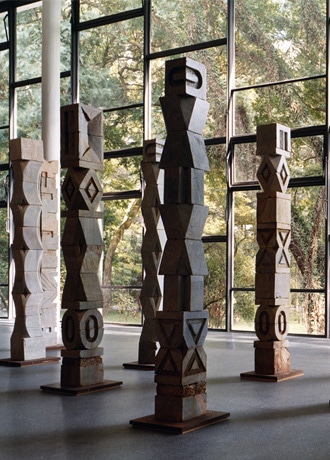
Removed from Unnamed collection
Afro Brasil Museum 
The Afro Brasil Museum is a public institution under the Secretary of Culture of the State of São Paulo and administered by the Afro Brasil Museum Association - Social Organization of Culture.
Located in Padre Manoel da Nóbrega Pavilion, within the most famous Park of São Paulo, Ibirapuera Park, the Museum preserves, in 11 thousand m2 a collection with more than 6 thousand works, including paintings, sculptures, prints, photographs, documents and pieces. ethnological works by Brazilian and foreign authors, produced between the eighteenth century and today. The collection encompasses several aspects of the African and Afro-Brazilian cultural universes, addressing themes such as religion, work, art, slavery, among other themes in recording the historical trajectory and African influences in the construction of Brazilian society. http://www.museuafrobrasil.org.br/o-museu
Map

Removed from Unnamed collection
Portuguese Language Museum 
To appreciate the diversity of the portuguese language, to celebrate it as a paramount and founding element of our culture and to bring it closer to its speakers worldwide.The Museu da Língua Portuguesa was born aiming at this target.
The inauguration took place on March the 20th , 2006. The chosen location to accommodate the Museum was the Estação da Luz, situated in the heart of São Paulo – city with the largest Portuguese-speaking population in the world – and a site of historical importance to the state capital and to Brazil. The station was one of the main crossing points for immigrants arriving in the country and, to this day, a dynamic place that provides contact and interaction among several cultures and social classes, sheltering accents from all parts of Brazil.
During almost 10 years of its operation, the Museu da Língua Portuguesa welcomed 3.931.040 visitors, who have lived the experience of connecting themselves even more with the language, its origins, its history, its influences and the variations it takes within the population’s everyday life. http://museudalinguaportuguesa.org.br/en/
Map
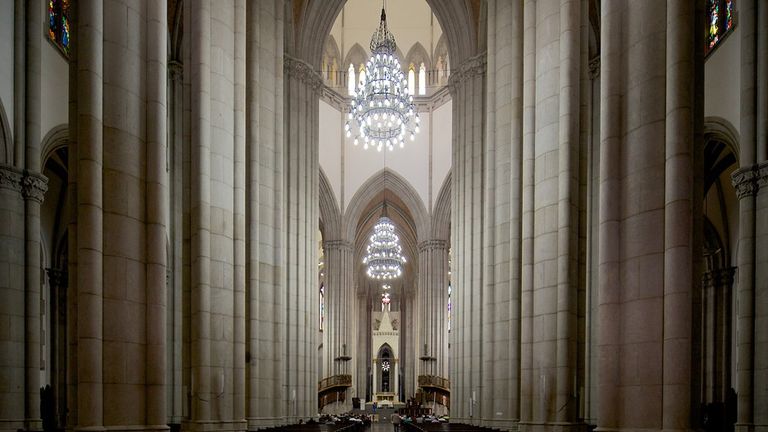
Removed from Unnamed collection
Sao Paulo Cathedral 
The history of the Cathedral of São Paulo goes back in time to 1589, when it was decided that a main church (the Matriz) would be built in the small village of São Paulo.
The Cathedral is the largest church in the city of São Paulo: 111 metres long, 46 metres wide, with the two flanking towers reaching a height of 92 metres. The Cathedral is a Latin cross church with a five-aisled nave and a dome that reaches 30 metres over the crossing. Although the building in general is Neo-Gothic, the dome is inspired by the Renaissance dome of the Cathedral of Florence.
The cathedral’s organ, built in 1954 by the Italian firm Balbiani & Rossi, is one of the largest in Latin America. It has five keyboards, 329 stops, 120 registers, and 12,000 pipes, the mouths of which display hand-engraved reliefs in Gothic style. http://placestovisitbrazil.com/cathedral-of-sao-paulo/
Map

Removed from Unnamed collection
Corinthians Arena 
The Arena, also known as Itaquerão, is located in the East Zone of São Paulo, Brasil's most populated city. The football stadium was built for the 2014 FIFA World Cup and can hold 48 thousand fans. With 89 boxes, 59 stores, 15 elevators, 2,700 parking spaces, two restaurants, an auditorium and two sports bar, the Arena has a daring architectural project, signed by the architect Aníbal Coutinho and awarded in 2011 as the best architectural project of Brasil.
With a rectangular format and two side stands, the Arena makes it possible for fans to get closer to the field. On the East front, there is a LED panel of 170m x 20m, and on the West front, there is a glass panel made of 1350 pieces. The Arena has two large screens of 30m x 7.5m, the largest in the world in a football stadium. https://www.visitbrasil.com/attractions/corinthians-arena.html
Map
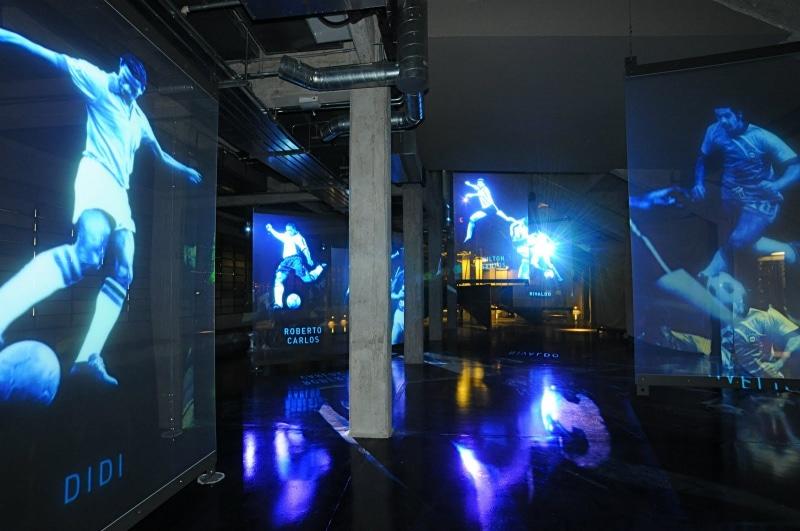
Removed from Unnamed collection
Museu do Futebol 
The Soccer Museum, open in 2008, was created to celebrate the sport that Brazilians are passionate about. The Museum is located in the Pacaembu Stadium, one of the best-known stadiums of São Paulo and fascinates even those who are not entirely a fan.
Build in an area of 6,900 m ², the Museum will provide an amazing audiovisual experience. At the Museum, the sport’s history is shown through 18 thematic rooms, 1,500 photographs, 5 hours of videos and other materials.
For those who already love soccer, the Museum is a must-see on your trip to Sampa. For those who do not have much interest in the sport, the Museum can completely change your mind once you get to know its space and feel the emotion it transmits in every carefully planned detail. https://www.visitbrasil.com/attractions/museu-do-futebol.html
Map
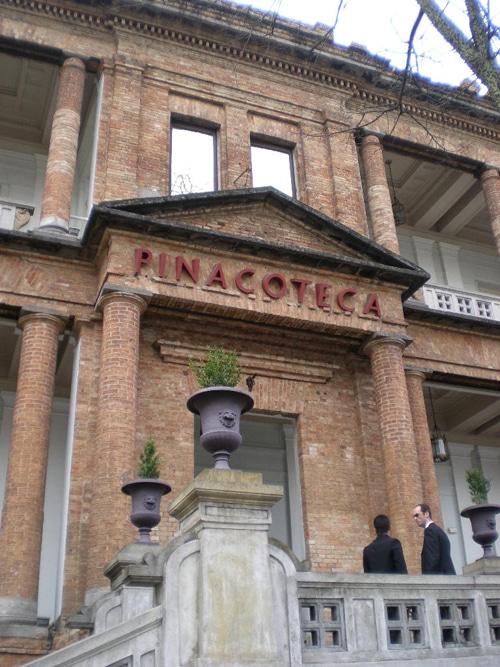
Removed from Unnamed collection
Pinacoteca 
Beautiful visual arts museum specialized on brazilian artists of the last 200 years. Located on the Liceu de Artes e Ofícios de São Paulo building, the Pinacoteca was open in 1905 and is the oldest art museum in the city of São Paulo. Its art collection has approximately 1900 artistic, bibliographic and archival items.
The art gallery displays works such as São Paulo by Tarsila do Amaral and Mestizo by Candido Portinari. In recent years, the museum received important exhibitions, such as Ron Mueck, seen by 402 thousand people.
Listed as a historic site, the Parque da Luz and the museum’s garden displays about 50 sculptures of contemporary artists, such as Victor Brecheret Lasar Segall and Amílcar de Castro. http://visitbrasil.com/en/atracoes/metropolitan-cathedral.html
Map

Removed from Unnamed collection
The Museum of Folklore 
The Museum of Folklore of São José dos Campos is a cultural space of the Cultural Foundation Cassiano Ricardo (FCCR) that works under the management of the Center for Studies of Popular Culture (CECP), through an agreement signed between the parties. http://www.museudofolclore.org/museu/institucional/
Map
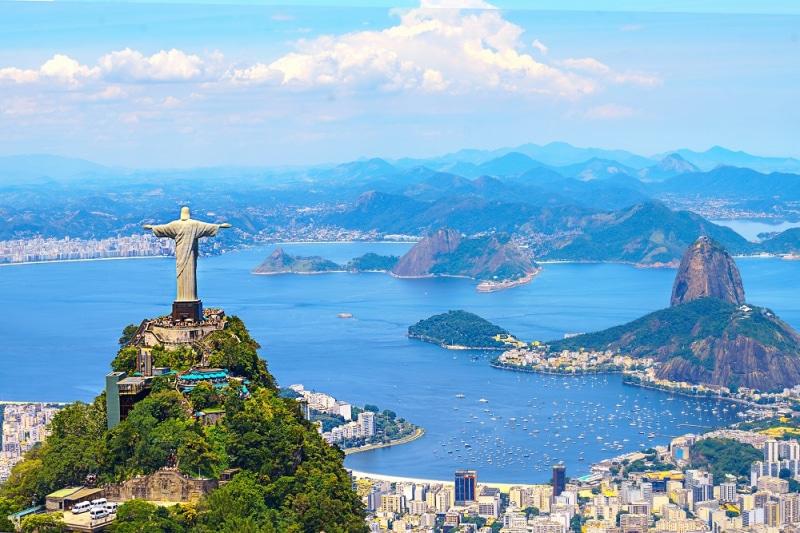
Removed from Unnamed collection
Christ the Redeemer Statue 
In the top of the mountain is installed Christ the redeemer, one of the most wanted touristic sides of Rio de Janeiro. Biggest and most famous scripture Art Déco of the world, the Christ statue started to be planned in 1921 and it was developed by the engineer Heitor da Silva Costa over 5 years of job, from 1926 to 1931, the opening year of the monument.
It’s located at Parque Nacional da Tijuca, 710 meter above the sea level, where anybody can appreciate one of the most beautiful views of the city. Over all 220 steps that lead to the famous statue feet, it was elected one of the Seven Wonders of the World made by formal voting in 2007 by the Swiss Institution New 7 Wonders Foundation. The monument is accessible by train, van or car. http://visit.rio/en/que_fazer/christtheredeemer/
Map

Removed from Unnamed collection
Sugarloaf Mountain 
From Praia Vermelha, the visitants take the first tram links to the Urca hill, and from there, a second tram takes them until the top of the Sugar loaf hill, it stays 396 meters of the sea level. Different histories justify the name of this touristic side; the most popular says that during the centuries XVI and XVIII, at the peak of the production of sugar cane, the producers stored sugar blocks in little boxes to be exported, and the resemblance of the object with Sugar loaf mountain gave origin to the name.
Inaugurated in 1912, the little tram of the Sugar loaf was the first Brazilian cable car and the third in the world, linking the Urca hill to the Sugar loaf mountain. Since then, more than 40 million of people have already used that cable cars.
From the high of the two mountains revels a gorgeous landscapes of the city, including the Botafogo cave, Copacabana edge and the entrance of Guanabara bay. In the summer, the amphitheater, located in the top of Urca hill is a stage for shows and night events, joining fun and a wonderful visual of lights of the city. http://visit.rio/en/que_fazer/sugarloaf/
Map
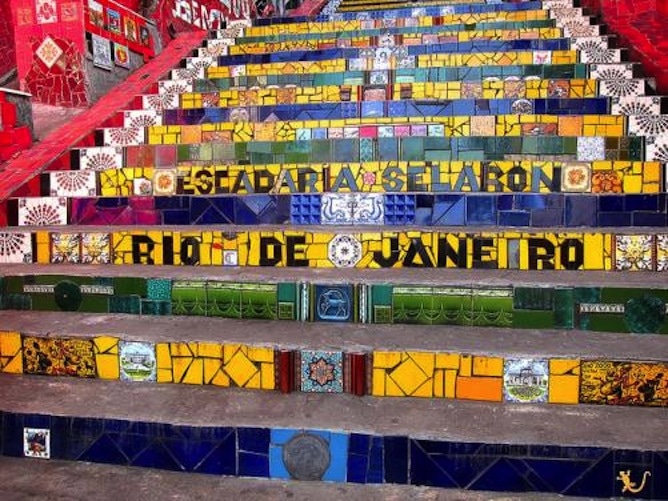
Removed from Unnamed collection
Escadaria Selaron 
Rio de Janeiro is a city full of undiscovered places that make your eyes turn. The Stairs of Selarón (Escadaria Selaron) used to be one of them. A magical place, in the middle of a metropole, with nobody around. Just an occasional visitor. But not anymore. Right now the stairs, that functions as a bridge between the neighborhoods Lapa and Santa Teresa, is one of the most visited highlights in the city. Thousands of people pass by every day. But the magic still exists.
The best time to visit the Stairs of Selarón is early morning before 10 am. After that time the tour agencies will arrive with loads of tourists until the end of the day. Of course, in low season – between April and Juni and September and November – you can get lucky during the day. Best spot is the upper part of the steps where you can find a more quiet corner with the Brazilian flag. https://www.gringo-rio.com/stairs-of-selaron/
Map
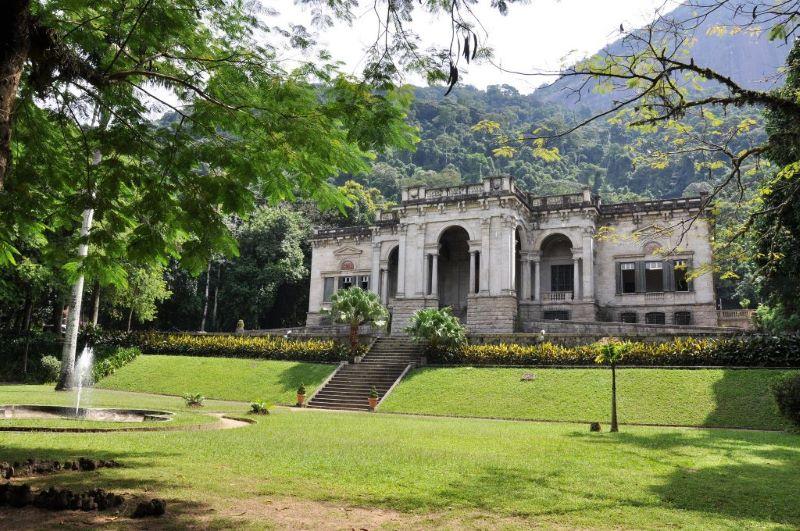
Removed from Unnamed collection
Parque Lage 
At the foot of the Corcovado Mountain, Parque Lage delights with 52 hectares of pure green, cultural and art programs.
Originating from an old sugar mill, the park makes part of the historic memory of the city. In 1957, it was tumbled by the IPHAN like as historical and cultural heritage of the city of Rio de Janeiro.
The main edification of the space, a big house of the XIX century, the Visual art school, works in Parque Lage (EAV), which offers free formation to beginner artists, training courses in art for youth, plus an intense program of exhibitions, seminars, lectures and video shows. EAV also have a library and auditorium with capacity for 150 people. On the main mansion courtyard by the pool, the BistrôPlage offers a delicious breakfast, more lunch and dinners with organic product which can be savored with the art and music events that happens on the place every year. In several weekends, ParqueLage crosses the down with art parties and festivals and music sponsored by initiative private and public. http://visit.rio/en/que_fazer/parque-lage-2/
Map
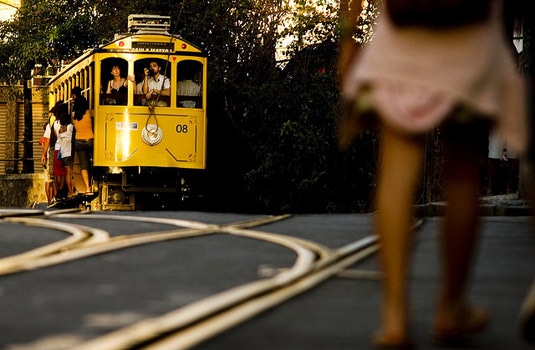
Removed from Unnamed collection
Santa Teresa 
Santa Teresa, the neighborhood of Rio de Janeiro that retain its colonial charm.
Santa Teresa is located on top of the Santa Teresa hill and presents a magnificent view of the city. It is one of the few neighborhoods to resist development in order to retain its colonial charm. It is famous for its winding, narrow streets and for being an artistic hotspot. The construction of the Santa Teresa in the 18th century convent marked the beginning of the development of this neighborhood. Its natural scenery, the pleasant atmosphere and easy access to downtown Rio make this an attractive neighborhood. It is currently a popular tourist site as the area has its fair share of restaurants with live music, cultural centers and other attractions. Its bars and nightclubs are popular with both natives and tourists. http://www.rio.com/practical-rio/santa-teresa
Map
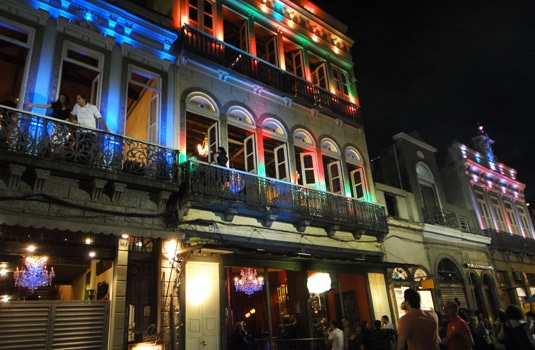
Removed from Unnamed collection
Lapa 
Lapa is a neighborhood famous for its Bohemian culture. It is well known for its architecture, the most famous monument being the Arcos da Lapa. The Passeio Publico is the first public park built in the city, which is another popular attraction of the neighborhood. Lapa is known for its lively social scene and cultural events. The neighborhood has many restaurants and bars. Many of these restaurants and clubs promote various forms of Brazilian music. The Sala Cecília Meirelles, an important venue for chamber music is also located in Lapa. The movement “I Am da Lapa” helped in the restoration of the neighborhood. With government support and active participation from the citizens, especially shop owners, great achievements in the development of the area have been made. http://www.rio.com/practical-rio/lapa
Map
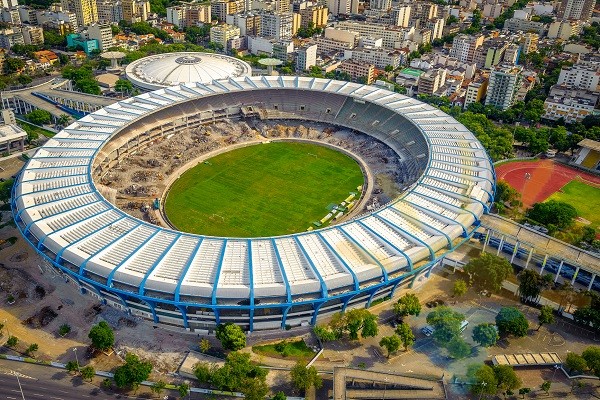
Removed from Unnamed collection
Maracana Stadium 
Maracanã has already been the scenery of the most important Brazilian soccer classic and earned historical moments of the international soccer. Monumental facts, like the thousandth goal of king Pelé, in 1969, also happened in the grass of the soccer Brazilian temple.
Maracanã had a big reform and had the total capacity to 78,838 supporters. The new Maracanã has been modernized and today fills international security items, logistic and sustainability. The use of solar energy and rainwater collection, reused in the 292 bathrooms and 4 dressing rooms, are important measures of economy and responsibility. More 360 security cameras keep the surveillance permanent of the stadium, that received two new ramps of access, besides the traditional Bellini and UERJ, beyond 12 escalators and more elevators, today, the total number is 17 of it.
New bars and snack bars give more comfort to the public, who are waiting for retractable chairs shared per colors and produced with certified material, with plastic bottle. Divided in five levels on the north, south, east and west sectors, Maracanã bets in divisions to facilitate the access and location of the supporters. Gate, sector, block, level, queues and chair are the subdivisions that will allow the supporters to localize their place with more comfort and more safety. There are also sits to obese, reserved area for people with special necessities and tactile floor for the visually impaired. http://visit.rio/en/que_fazer/maracanastadium/
Map
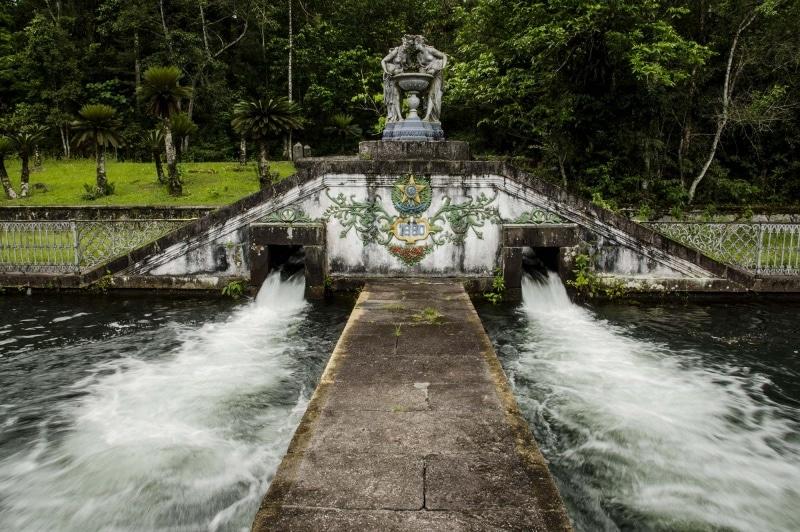
Removed from Unnamed collection
Rio D'Ouro Reservoir 
Preserved and in full activity, Rio D'Ouro Reservoir, built in 1880, is an architectural jewel of Nova Iguaçu, located on a natural site covered by the Atlantic Rainforest. From its pavilion, there is a footbridge that crosses the reservoir and leads to a fountain made of cast iron designed by the French sculptor Albert-Ernest Carrier Belleuse. He was the designer of the torches of the staircase at the Paris Opera Theater as well as the professor of the acclaimed sculptor, Auguste Rodin.
Nymphs, carved in the foundries of Val D'Osne in France, guard the fountain adorned by twigs and the Brazilian coat of arms. With a sophisticated hydraulic engineering for the time of its implementation, Rio D'Ouro Reservoir is listed by INEPAC (State Institute of Cultural Heritage). http://mapadecultura.rj.gov.br/headline/rio-douro-reservoir#prettyPhoto
Map

Removed from Unnamed collection
Saint Anthony of Jacutinga Cathedral 
Built in 1862 and promoted to main church a year later, the Saint Anthony of Jacutinga Cathedral is in the middle of busy Nova Iguaçu's downtown area. Festivities in honor of the city's patron saint are held there, in June. http://mapadecultura.rj.gov.br/headline/saint-anthony-of-jacutinga-cathedral
Map

Removed from Unnamed collection
Forte dos Reis Magos 
Ground zero of the city of Natal, the Fort was built by Portuguese settlers and provides a beautiful view of the city!
Known as Fortaleza dos Reis Magos, the Barra do Rio Grande Fort was the first building of Natal, capital of the state of Rio Grande do Norte. Designed by Priest Gaspar de Samperes, the Fort began to be built by the Portuguese settlers on January 6, 1598 (Three Wise Men’s Day), hence its name. Shaped like a star, the Fortress set in motion the construction of the city and is its main historical-cultural monument.
Its location by the mouth of the Potengi river was strategic in the 17th century, offering a broad view of the sea and avoiding invasions by pirates, who arrived at the coast to steal pau-brasil (native tree to the Atlantic Forest). The view is one of the most beautiful of Natal. https://www.visitbrasil.com/attractions/fortaleza-dos-reis-magos-fortress-of-the-three-wise-men.html
Map

Removed from Unnamed collection
Centro de Turismo 
The location of Forró with Tourist is a separate attraction. The building where the Natal Tourism Center operates today enjoys one of the most privileged views of the urban beaches of Natal, the Potengi River, the Reis Magos Fortress and the Newton Navarro Bridge (Natal - Redinha). This is where we meet every Thursday for Forró com Turista.
Today, the Center is one of the best handicraft centers in Rio Grande do Norte, where each old cell is a small shop with the most diverse types of our crafts. It is currently administered by a publicly recognized association with the support and supervision of the State Secretariat of Tourism.
With over forty years of existence, the Natal Tourism Center has become one of the main attractions for visitors arriving in the city. The fact of adding a range of services and options in a historic building is undoubtedly a difference compared to other Christmas craft centers.
Those who come to the Tourism Center not only take, but also keep strong memories of a space where you can find the best products of potiguar crafts, art and culture. https://forrocomturista.com.br/centro-de-turismo
Map
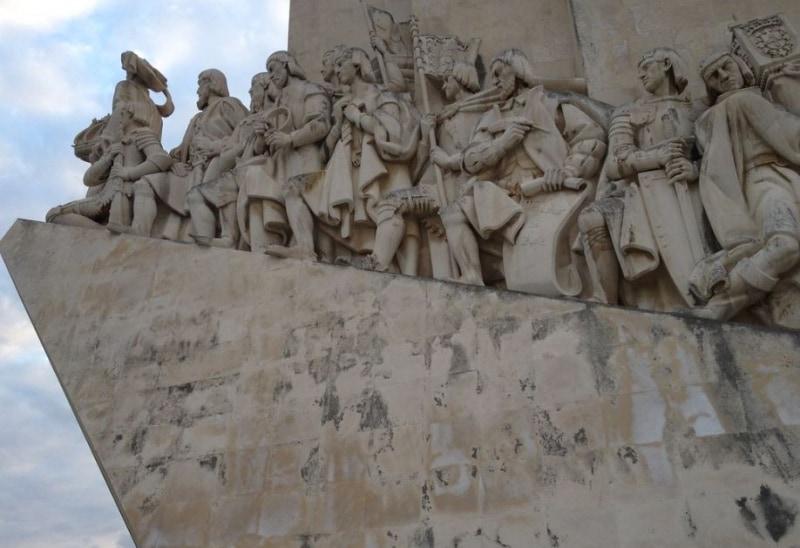
Removed from Unnamed collection
Marco do Descobrimento 
What is the Discovery Landmark? How important is this monument to our history? This is because the discovery landmark is the name given to a specific monument in Bahia, in Porto Seguro. Mainly known for being the first monument brought by the Portuguese, around 1500, in the so-called “discovery” of the country. After all, this is one of the main tourist spots for those who love history.
We can define the Marco do Descobrimento as a Portuguese stone column that features an inscription, whose function is to affirm Portuguese sovereignty in the place where it is inserted.
It's almost like saying: Portugal is the law and the divinity !!!
The place where the Marco do Discovery stone is inserted is easily accessible to the public since it is located in the Historic Center of Porto Seguro.
Being easily accessible even more because it is not necessarily inside any religious chapel present on the site. There is only one glass dome that has been placed for the preservation of the monument. https://hoteisquintadosol.com/marco-descobrimento-brasil/
Map

Removed from Unnamed collection
Reserva da Jaqueira 
Are you travelling, but would like to have a totally different experience? Therefore, the 800 hectares of native forest and the hollows distributed throughout the Reserva da Jaqueira will impress you! The entire village is still built similarly to the original and colonial times. And you don't have to worry about anything! After all, this Indian village in Porto Seguro is fully committed to the goal of sustainable development. Therefore, tourists are very welcome and have the chance to admire celebrations, celebrations and Indians dressed in character.
In addition, you can even take a risk in the practice of archery, buy handicrafts made in the tribe and participate in ecological trails. It does not stop there! The integration with the Pataxó Indians in Porto Seguro also includes the participation of rituals, body painting and the taste of typical gastronomy.
Did you like the idea? So, this text was made entirely for you. Check out all the information to discover the Reserva da Jaqueira, try the fish baked in the leaf of the patio and even spend the night in the village. It's a very interesting program, isn't it? And all of this is at a very reasonable distance from the city! https://hoteisquintadosol.com/reserva-da-jaqueira/
Map
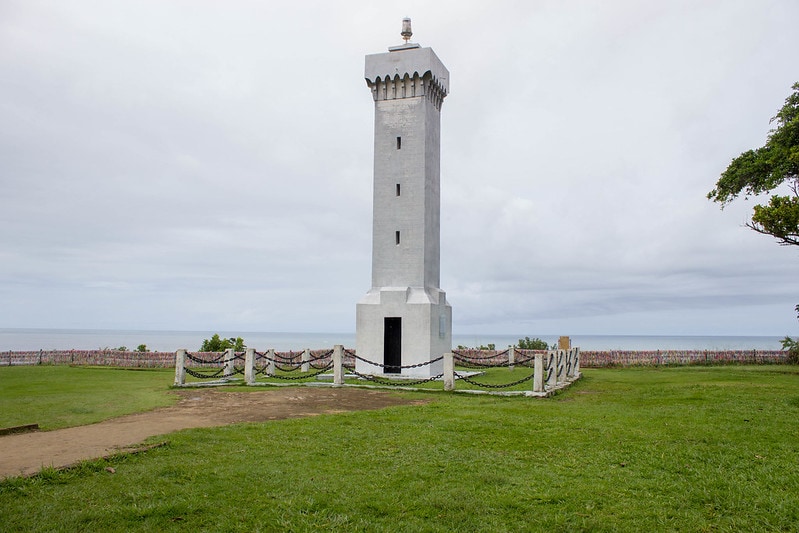
Removed from Unnamed collection
Porto Seguro Lighthouse 
The Porto Seguro Lighthouse is in the state of Bahia. This is one of the main attractions of the region according to the National Historical and Artistic Heritage Institute. It is a lighthouse and a 12-meter high gallery, being a masonry tower. The Porto Seguro Lighthouse is capable of emitting two white lightnings followed by a red one every 30 seconds.
One of the main reasons why there are many tourists at the Porto Seguro Lighthouse is not only the incredible view of the sea. This is because there is also the weight of the whole story it represents.
Representing more than 100 years of history, this structure was inaugurated on July 10, 1907. It all happened after a decision taken by the Casa da Câmara and Cadeia.
Being one of the most conventional and facilitated ways in addition to bringing more pleasant lighting, it also provides security. The first Porto Seguro Lighthouse would have been constructed from another material: iron structure, with an external staircase as its main characteristic. Therefore, it was rebuilt in 1947, using considerably safer material. The reform was one of the main changes, covering the amount of visits by the tourist spot. https://hoteisquintadosol.com/farol-porto-seguro/
Map
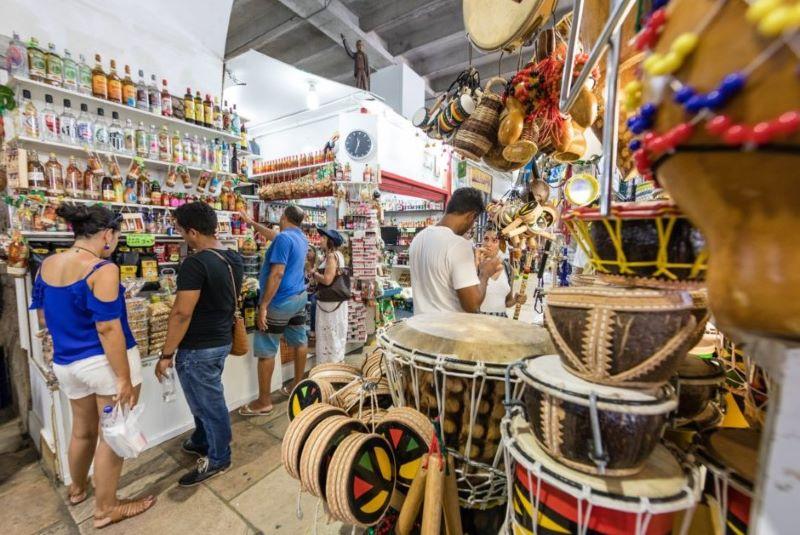
Removed from Unnamed collection
Mercado Modelo 
Mercado Modelo is a summary of Bahia’s culture, the origin of Brazil. It all started here! Surrounded by other city postcards, you can use the Lacerda Elevator and visit the Historic Center (in the Upper Town) on the same day. The building, constructed in 1861 to run the Customs House, went through some fires, but kept the original neoclassical architecture. So beautiful!
Bring coins, change, bargain, after all, bargaining is part of Bahian culture! There are more than 250 local artisanal stores, souvenirs, clothes, sweets, cachaças, Bonfim’s famous stripes and other things from Bahia! Traditional restaurants such as “Maria de São Pedro” and “Camafeu de Oxóssi”. There are also more modest options. The smell of acarajé reminds us that this is an awesome option! If the basement is open for visitation, go without fear… or with fear! Lol! Kidding! Go there! There’s a lot of history in that place! https://www.salvadordabahia.com/en/experiences/mercado-modelo-2/
Map
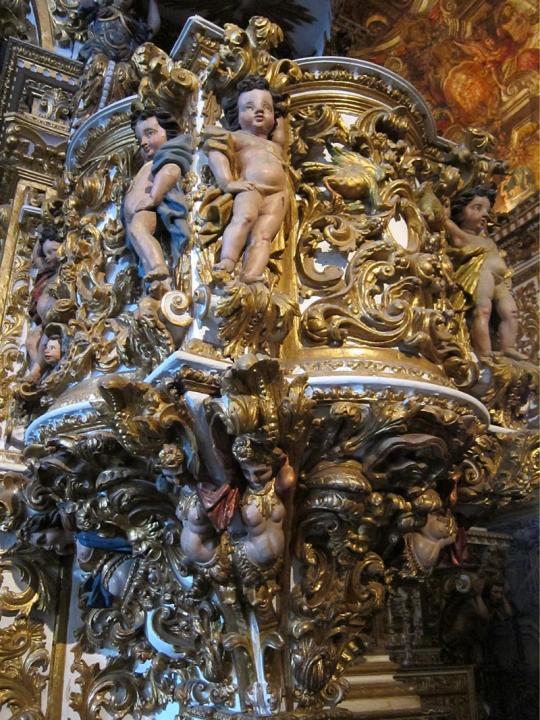
Removed from Unnamed collection
Church Our Lady of the Rosary of Black 
Built by one of Brazil's first black brotherhoods, it stands out for its grandeur and beauty.
Founded in 1685 by one of the first brotherhoods of black men in Brazil, the Nossa Senhora do Rosário dos Pretos Church was erected in Pelourinho by black religious and slaves who lived in Salvador . It took decades to complete (from 1704 to 1780), as members of the brotherhood could only work on the building in their spare time.
The rococo towers with bulb endings are lined with tiles with scenes from the devotion to the Rosary of Lisbon, dating from 1790. Inside, there are panels depicting scenes from the life of Saint Dominic and, besides the image of the saint who lends the In the name of the Church, there are also images of Saint Benedict, Saint Anthony of Catgera and the Crucified Christ, in ivory. The altars are in neoclassical style and, in the back, there is an old slave cemetery. https://www.visitbrasil.com/pt/atracoes/igreja-nossa-senhora-do-rosario-dos-pretos.html
Map

Removed from Unnamed collection
Fortaleza Cathedral 
The Metropolitan Cathedral of Fortaleza started to be built in 1939, and took nearly 40 years to complete (it was dedicated on December 22nd 1978); the design was by French architect George Mounier. The church, built in Gothic-Roman style, fits 5,000 people, and is the third largest in Brazil.
The church is located across the street from the Central Handicraft Market and at a short distance walk from the Fortress of Nossa Senhora da Assunção.
Black spots on the outside walls are caused by humidity. The Cathedral belongs to the Catholic Church and doesn't receive any funding from the Government. The mixtures of styles is well visible: towers in spear shape, like Gothic churches, and the main cupula has squared shape, like the Roman churches. http://www.visitfortaleza.com/travel/cathedral.html
Map

Removed from Unnamed collection
Fortaleza Central Market 
Fortaleza Central Market is the largest market in the northeast. Visitors can find in the Central Market: leather goods (sandals, shoes, hats, bags and bags), lace and embroidery on clothing and bedding, table and bath, bobbin lace, t-shirts, mini-raft souvenirs, costume jewelry, gold jewelry and home furnishings. Regional products that delight the palate of tourists such as cachaça, liqueurs, nuts and cashew candy, are also for sale market. Restaurants offer typical northeastern foods. Stairs, ramps, and the elevator facilitate public access to the upper floors.
Visit Fortaleza Central Market and become a character of this story! https://mercadocentraldefortaleza.com/
Map
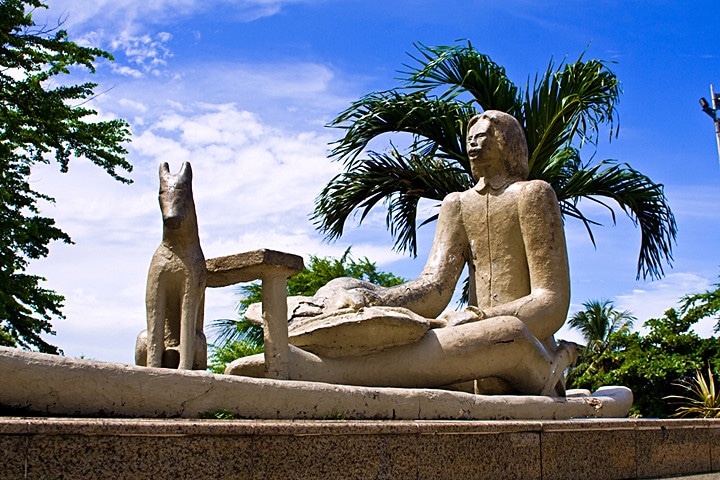
Removed from Unnamed collection
Iracema Statue 
Iracema is the main character of a novel with the same name written by Brazilian writer José de Alencar. The novel tells the story of Iracema and Martim Soares Moreno; Moreno was one of the first Portuguese to come to explore Fortaleza (read History of Ceará), and Iracema would be his wife.
Iracema became so associated with Fortaleza (hence the name of Iracema beach) that a few statues of her were built and are exhibited in the city. This one was sculpted in concrete by Corbiniano Lins, and displays Iracema, Martim Afonso, their son and their dog, sitting on a jangada.
The artist preferred a modernist approach, which resulted in some corporal distortions, like disproportional thick legs and large breasts. Despite some criticisms, this Iracema has been in exposition since 1965, and was for a long time the most famous landmark of Fortaleza. http://www.visitfortaleza.com/travel/old-iracema-statue.html
Map
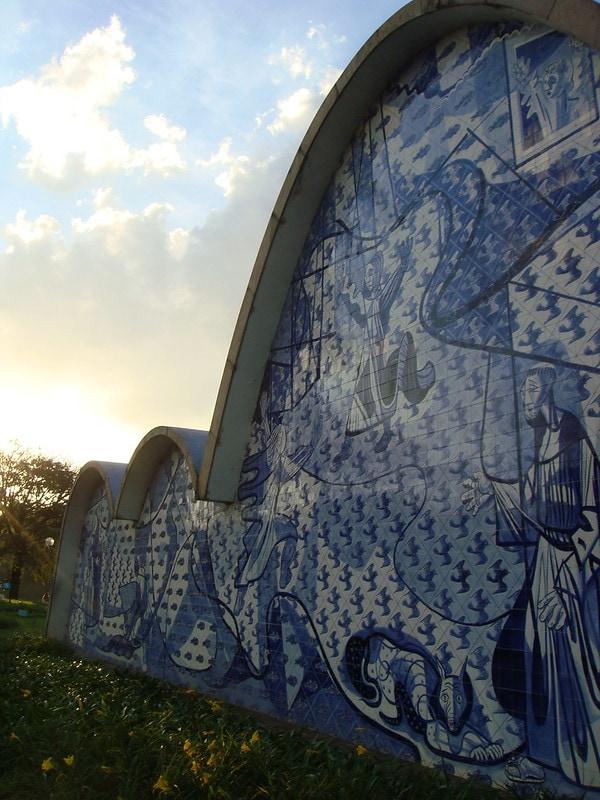
Removed from Unnamed collection
Franscisco de Assis Church 
Most famous postcard of the capital city of Minas Gerais, the church is a rare gemstone located at the rim of the Pampulha Lagoon. Also known as Pampulha Chapel, the São Francisco de Assis Church opened its doors in 1943, but it was only truly recognized by Church authorities 14 years later, in 1959, due to some debate regarding its unorthodox shape.
Considered avant-garde, the Church is a small masterpiece of the Pampulha Architectural Complex. It was designed by architect Oscar Niemeyer and its interior houses the famous Via Crucis, consisting of 14 panels of Cândido Portinari.
The Church also features the Burle Marx gardens, the bronze bas-relief sculptures carved by Alfredo Ceschiatti, and an abstract panel created by Paulo Werneck. The exterior is decorated with more beautiful Portinari panels, made in white and blue tiles, depicting Saint Francis next to a skinny dog, instead of the traditional wolf.
The originality and boldness of Niemeyer consolidated this church as a true modern age landmark. It was the first Brazilian church with modernist traces, and its vertical and horizontal curves mesh together in unique and perfect harmony. https://www.visitbrasil.com/attractions/franscisco-de-assis-church.html
Map
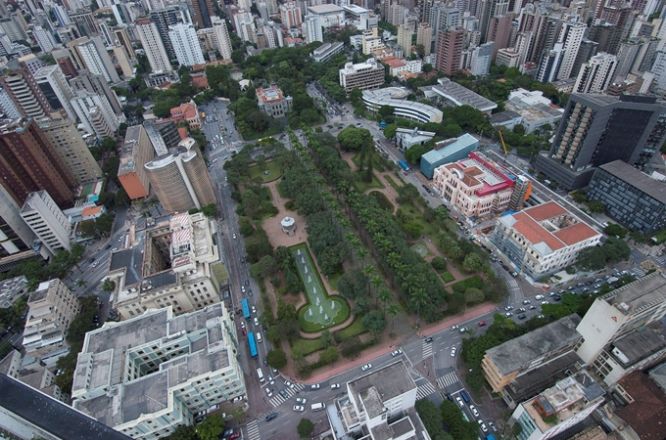
Removed from Unnamed collection
Liberty Square Cultural Circuit 
The Praça da Liberdade is not just something you see on a postcard of Belo Horizonte. Throughout its 100-year history, it has been the scene of important political decisions, social movements and even cultural, leisure and sporting events.
Since 2010, the square has been an additional source of pride. Following the relocation of the state government offices to Cidade Administrativa, the buildings were converted into museums and spaces that now make up the Praça da Liberdade Cultural Circuit. One of its points of difference is the institutional management of the spaces, which permits a greater connectivity and diversity of cultural programmes. The complex is supported by the Sérgio Magnani Cultural Institute in partnership with the Government of Minas Gerais.
Whoever visits the Praça da Liberdade Cultural Circuit can also visit three other spaces that are within easy reach: the Minas Tênis Culture Centre, Casa Una Culture Centre and the Belas Artes Cinema. In addition to being of great symbolic and architectural value to the city, the area is home to several places that exhibit the vast majority of Minas Gerais's cultural diversity and art that is known worldwide, all within a few blocks. http://www.guiadasartes.mg.gov.br/index.php/en/circuits/liberty-square-cultural-circuit
Map
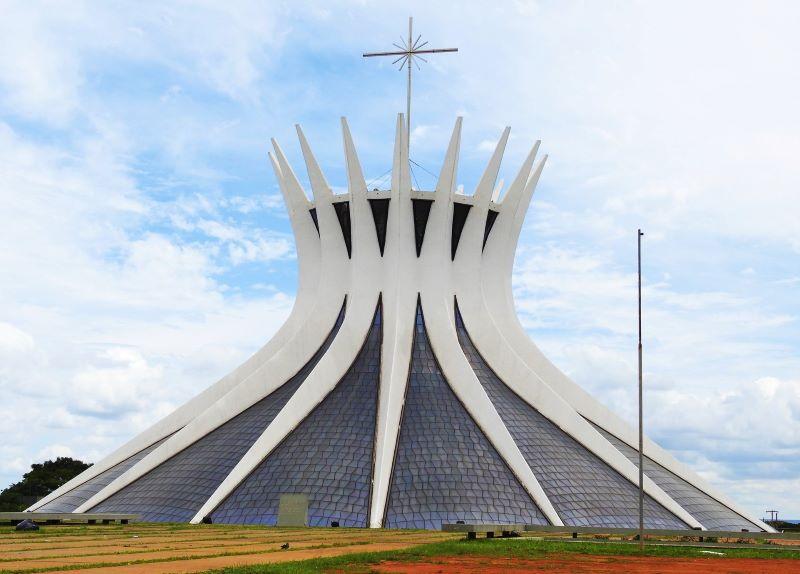
Removed from Unnamed collection
Cathedral of Brasilia 
The Cathedral of Brasilia was the first monument built in the city and its cornerstone was set in September 1958. The structure was completed by 1960, a time when only the circular area was visible, measuring 70 meters of diameter and working as foundation for 16 concrete columns weighing 90 tons.
The Cathedral was inaugurated in May 1970. Consecrated architect Oscar Niemeyer designed the church, as well as the Alvorada Palace, the National Congress, the Planalto Palace and the Federal Supreme Court buildings, among others.
The church has a peculiar beauty. Held by 16 arched pillars that form a thorn crown, the central nave is covered by an immense stained glass panel projected by Marianne Peretti, made out of glass fiber pieces in blue, green, white and brown.
Inside the church, three huge angel sculptures by Alfredo Ceschiatti float from the ceiling suspended by steel cables. The baptistery is covered in tiles painted by Athos Bulcão. The Via Sacra is a piece of work by Di Cavalcanti and the image of Our Lady Aparecida is a replica of the original, this one located in Aparecida, in the state of Sao Paulo. https://www.visitbrasil.com/attractions/brasilia-cathedral.html
Map
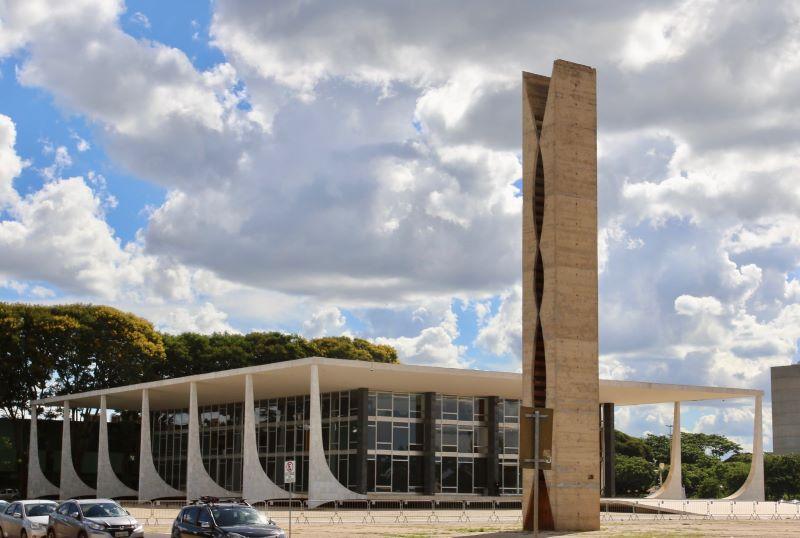
Removed from Unnamed collection
Praca dos Tres Poderes 
Designed by Oscar Niemeyer and Lucio Costa, the Praça dos Três Poderes is one of Brasília’s main attractions and headquarters of the three powers of State: the Palácio do Planalto (Presidential Palace), the Supremo Tribunal Federal - STF (Supreme Court) and the Congresso Nacional (National Congress).
The Três Poderes cultural center, subject to the local Cultural Secretary, manages the activities of the three cultural spaces of the plaza. They are: the Museu Histórico da Cidade (the city’s historical museum that contains historical records on the city’s construction), the Espaço Lucio Costa (with an enormous scale model of Brasília) andthe Panteão da Pátria (with art works honoring national heroes).
At the Praça dos Três Poderes, you can also find monuments designed by renowned international artists such as Os Candangos, by Bruno Giorgi; A Justiça, by Alfredo Ceschiatti, located in front of the Supreme Court; O Pombal e a Pira da Pátria, by Niemeyer; and the Mastro da Bandeira, with the largest national flag in the world. https://www.visitbrasil.com/attractions/praca-dos-tres-poderes.html
Map

